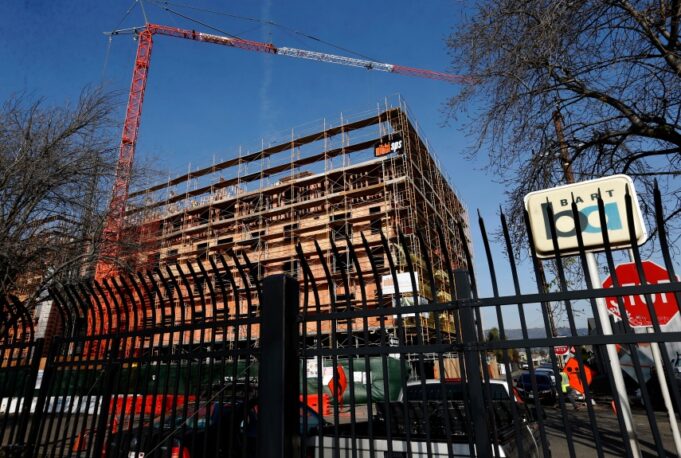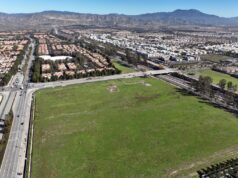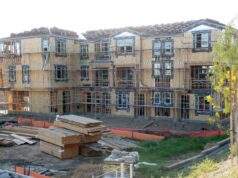Ethan Varian
When voters in three Bay Area cities get their ballots in the mail next month, they’ll be asked whether their cities should be allowed to help build more desperately needed affordable housing.
The reason for seeking voters’ permission? A 72-year-old provision in the California Constitution requiring local governments to get community approval before developing, buying or funding “low rent housing” – a law that voters across the state will choose whether to repeal in 2024.
Article 34, passed by a statewide ballot initiative in 1950, has blocked affordable housing for decades while creating costly hurdles for developers and local officials who want to build homes for low-income residents. The amendment was the result of a successful campaign by the state’s real estate industry, which drummed up racist fears about public housing and neighborhood integration.
“There was a time, and it still exists today because of (this provision), where it was OK to just blatantly say we don’t want Black people in our neighborhoods – and that’s the legacy of Article 34,” said Oakland City Councilmember Carroll Fife, who introduced the city’s affordable housing measure.
If approved, three measures would clear the way for new government-developed housing, as well as for additional affordable homes built by private developers that receive public funding, a far more common way to create low-income housing.
Oakland’s ballot measure would allow 13,000 additional affordable units. Berkeley’s would greenlight 3,000 low-income units. And South San Francisco’s measure would allow new affordable homes totaling 1% of existing units in the city limits each year for an eight-year period. None would approve or dedicate funding to any individual developments.
Opponents, including residents and taxpayers groups, say the measures will inevitably lead to misuse of public funds. The Alameda County Taxpayer Association described the Oakland measure as an effort “to make the voters believe that something good would actually result, rather than more waste and misuse.”
While such measures tend to pass in the Bay Area, housing advocates say Article 34 still triggers unnecessary costs and delays for developers who must comply with the law and for local governments needing to fund elections in order to plan for new affordable housing.
“It creates significant barriers to our ability to solve our housing crisis because it makes it a lot harder to build publicly funded housing for low-income people,” said State Sen. Scott Wiener, a Democrat from San Francisco, who co-sponsored a bill to repeal Article 34.
Wiener’s bill, overwhelmingly approved by lawmakers in August, will put a statewide measure on the 2024 ballot asking voters to eliminate the “completely racist provision.”
Despite lawmakers’ support, Weiner acknowledged it will be a challenge to win over voters, who he said tend to be wary of giving up their right to decide local issues. Three past efforts to repeal or weaken Article 34 all failed. The last attempt was in 1993.
But Wiener said initial voter research suggests once people learn about Article 34’s discriminatory roots and its impact on affordable housing, a majority support its repeal.
Article 34 was approved shortly after the establishment of the federal Housing Act of 1949 banning racial segregation in public housing – a provision that set many White communities on edge.
Residents in the Northern California coastal city of Eureka spearheaded the amendment to stop the housing authority there from using federal money to develop low-income housing. They partnered with the California Real Estate Association, which paid for the campaign to pass the measure, pitching the amendment as essential to preserving White neighborhoods.
Over the years, cities and counties have found legal workarounds to the provision. The main strategy is for local governments to ask to create a certain number of affordable units without needing to specify the developments or their location. The language can be included in housing bond proposals and ballot measures, such as the ones coming before voters this year. Additionally, publicly backed projects where less than 49% of units are affordable are exempt from Article 34.
Still, ensuring developments don’t run afoul of the law can add between $10,000 and $80,000 to the cost of building an affordable unit, according to state officials. And projects sometimes fail to get off the ground in part because of that increased expense and uncertainty.
Sarah Karlinsky, a housing policy expert with the Bay Area urban think tank SPUR, said the referendum requirement is one of various laws and policies some wealthy communities historically have used to keep out low-income housing.
“If a goal is to build affordable housing in all communities in California, this does not help achieve that goal,” Karlinsky said.
Going forward, the state is beefing up enforcement efforts to ensure local governments meet their affordable housing targets, whether or not Article 34 is repealed. State officials in 2019 said the six-county Southern California region needed 1.34 million new homes by the end of the decade.
The California Association of Realtors, the successor organization to the California Real Estate Association, is now a primary backer of repealing Article 34, in part to rectify the group’s role in enshrining the law in the state constitution.
Sanjay Wagle, senior vice president of government affairs for the association, said the group is still working to decide how much it will spend on the repeal campaign. The aim will be to convince voters the provision is a relic of the state’s racist past that continues to hinder new affordable housing.
“That’s where polling comes in to decide: Is this a $5 million campaign, or is this a $40 million campaign?” he said, “Because we don’t know how much education is going to be necessary.”











